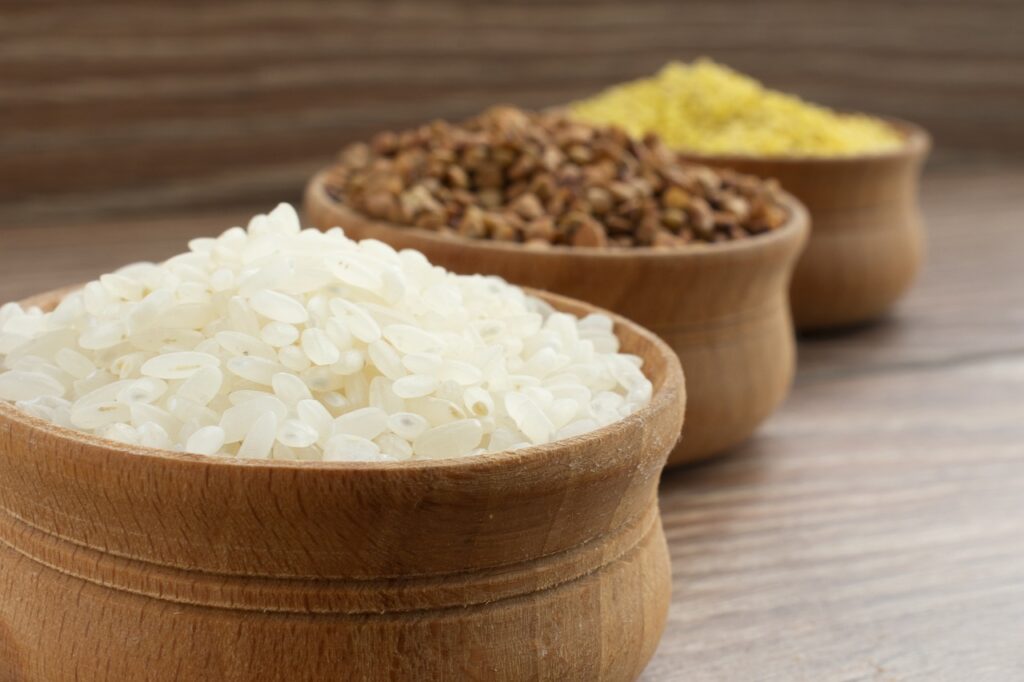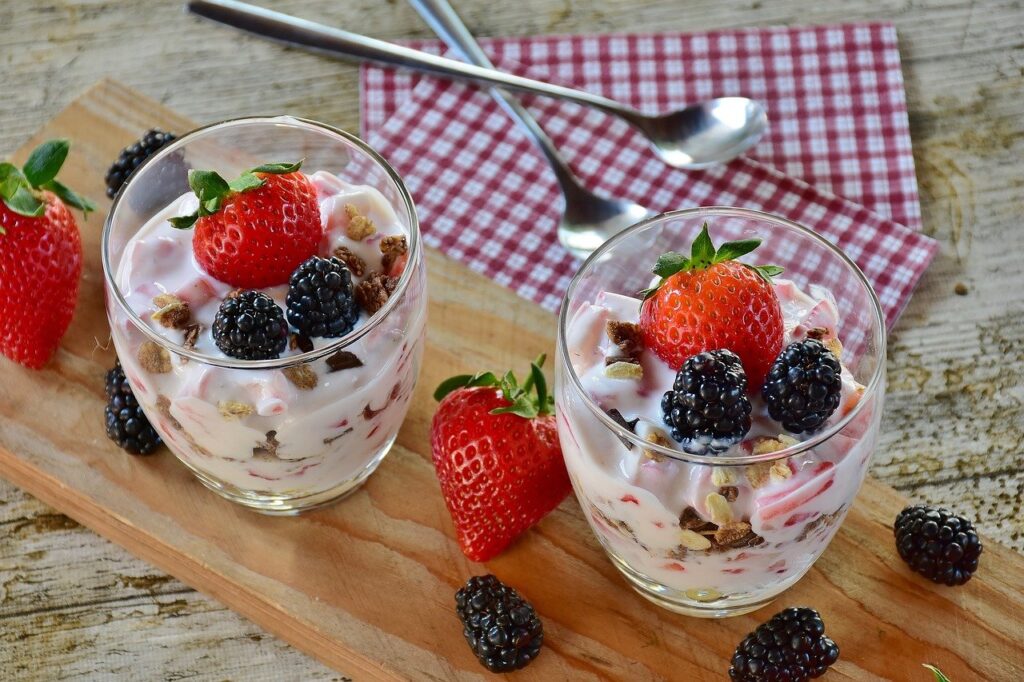What is DASH diet?
The DASH diet stands for the ”Dietary Approaches to Stop Hypertension”. It is used for the prevention and controlling of hypertension. It can also help in lowering of high blood pressure, cholesterol and other fats in your blood.
Moreover, this diet is low in sodium i.e. salt and rich in nutrients such as vitamins and minerals.
Goals of DASH diet:
- To lower blood pressure level and maintain it at desirable level.
- To control sodium intake to manage hypertension in sodium sensitive persons.
- Control of body weight at desirable level.
- To prevent long term complications of hypertension.
How DASH diet came into effect?
DASH was first introduced at a meeting of the American Heart Association in 1996. And later published in the New England Journal of Medicine in 1997.
Firstly, the DASH trial randomly assigned 456 people to different diets to test the effects of dietary patterns on lowering blood pressure. It was inferred that eating a diet with many different foods groups would show a greater effect on blood pressure than eating single nutrients, such as found in supplements or in a limited diet.
Three diets were tested:
1) a control diet, or a standard American diet.
2) a fruits and vegetables diet, similar to the control diet but providing more fruits and vegetables and less snacks and sweets.
3) a combination diet rich in fruits, vegetables, nuts, and low-fat dairy foods with reduced amounts of saturated fat, total fat, and cholesterol.
The last two diets were richer in nutrients associated with lower blood pressure, such as potassium, magnesium, calcium, fiber, and protein. All three diets provided about 3000 mg sodium, which is more than the recommended amount from the Dietary Guidelines for Americans. But less than the average sodium intake for Americans.
Despite no weight changes, the combination diet reduced blood pressure more than the other two diets. Those with hypertension showed greater decreases in blood pressure than those without hypertension. The reduction of blood pressure in the DASH combination diet was comparable to that of people on medication for stage 1 hypertension.
(Source: nutritionsource/healthy-weight/diet-reviews/dash-diet/)
DASH diet:
DASH diet emphasizes increase in low fat dairy and its products, fruit and vegetables consumption. And also reduction in fats, sweets, and red meat consumption.
It focuses on:
- dietary patterns, rather than single nutrients.
- foods that are rich in antioxidants.
Table: Number of DASH diet servings for different energy levels



Grains:
For grains, focus should be more on whole grains like whole wheat bread/chapati, oats. And millets such as jowar chapati, bajra, ragi or rice. In other words, choose whole grains over refined grains as they have more fibre and nutrients.

Vegetables:
Vegetables such as tomatoes, carrots, broccoli, green beans, green leafy, peas and sweet potatoes are a great sources of fibre, vitamins, and minerals such as potassium and magnesium. Moreover, in aspect of serving, 1 serving equals to 1 cup of raw leafy green vegetables.

Fruits:
Seasonal fruit options are always the best to choose from. These fruits are low in fat, cholesterol. And high in fibre, potassium, and magnesium, and vitamins. So, they are the obvious choice when it comes to following a healthier DASH diet.

Dairy:
When choosing dairy products as a part of DASH diet, always make sure to opt for the fat-free or low fat such as skimmed or toned milk and its products. Dairy products are rich in calcium, Vitamin D, and protein, thus adding them to your diet can be a very healthy choice.

Lean meat, poultry, and fish:
Meat is a great source of Vitamin B such as thiamine, riboflavin, niacin, vitamin B6 and vitamin B12. And also rich in protein, iron and zinc. Further, the healthiest way to consume meat, poultry or fish is to bake, grill or roast instead of frying in oil.

Nuts, seeds and legumes:
This food group is high in magnesium, potassium as well as fibre and phytochemicals. These nutrients can help to protect against certain types of cancers and cardiovascular disease. Some examples are almonds, sunflower seeds, kidney beans, peas or masoor dal.
The important thing to remember is that nuts contain healthy fats such as MUFA and omega-3 fatty acids. A good way to include them in your diet is to add them to salads or breakfast.

Fats and oils:
The DASH diet aims to limit the total fat consumption per day by focusing on healthier fat such as MUFA and PUFA. It is important to include fats in your diet because they help to absorb important vitamins and boost your body’s immune system.
According to the DASH diet, you should limit your intake saturated fat such as butter, cheese, whole milk and cream in your diet. It also recommends to completely avoid trans fats found in processed foods and fried items.

Sweets/Sugar:
In DASH diet, you don’t have to eliminate your sweets or sugar entirely. However, you can limit the intake of them. It is also alright to use artificial sweeteners, but consumption should be in moderation.

Researches that shows the effectiveness of DASH diet:
In a study conducted by the Lawrence J. et al. and published in The New England Journal of Medicine, they enrolled about 459 adults with systolic blood pressures of less than 160 mm Hg and diastolic blood pressures of 80 to 95 mm Hg. These subjects were not on anti-hypertensive medications. For three weeks, the subjects were fed a control diet that was low in fruits, vegetables, and dairy products, with a fat content typical of the average diet in the United States. They were then randomly assigned to receive for eight weeks, a combination diet rich in fruits, vegetables, and low-fat dairy products and with reduced saturated and total fat. Sodium intake and body weight were maintained at constant levels.
The systolic and diastolic blood pressures were 131.3±10.8 mm Hg and 84.7±4.7 mm Hg respectively. The combination diet reduced systolic and diastolic blood pressure by 5.5 and 3.0 mm Hg more, respectively, than the control diet. Among the 133 subjects with hypertension (systolic pressure >140 mm Hg; diastolic pressure >90 mm Hg; or both), the combination diet reduced systolic and diastolic blood pressure by 11.4 and 5.5 mm Hg more, respectively than the control diet; among the 326 subjects without hypertension, the corresponding reductions were 3.5 mm Hg and 2.1 mm.
Few tips that will be helpful in following DASH Diet:
Getting started:
- When you think of starting with DASH diet, always keep in mind not to make changes all at once. But to change your eating habits gradually.
- It will be easier for you to add vegetables in form of a salad such as adding cucumber, onion, lettuce, carrots, or tomatoes in your lunch and dinner. In other words, try to make your meal plate as colorful as possible by adding different vegetables and fruits.
- If you don’t eat fruit daily or have juice only at breakfast, add a serving of whole fruit to your meals or have it as a snack.
- Gradually, increase your use of fat-free and low-fat milk and milk products to three servings a day. For example, drink milk with lunch or dinner to reduce your intake of saturated fat, total fat, cholesterol and calories.
- Read the Nutrition Facts label on oils and salad dressings to choose those lowest in saturated fat and trans fat.
Treat meat as a part of meal, not the sole focus:
- Limit lean meats such as fish, skinless poultry to 3-6 ounces a day i.e. 1-2 servings in a day.
- If you eat large portions of meats then you should cut them back slowly.
- Increase servings of vegetables, brown rice, whole wheat pasta, and cooked dry beans in meals which have less meat and more vegetables, grains, and dry beans.
Use foods low in saturated fat, trans fat, cholesterol, sodium, sugar:
- Fresh fruits require little or no preparation. Dried fruits are also a good choice to carry with you or to have ready in the car.
- Choose healthy snacks such as makhana, murmura, dried fruits, unsalted popcorn, seeds and nuts but mind the portions as these snacks are high in calories.
- For dessert, choose healthier options such as fresh fruit or low-fat yogurt instead of sweets such as cakes, rasgulla, burfi, pasteries, etc.
Frequency of meals:
- Frequency of meals (5-6 times), quality of meal and portion size is the key to healthier you. It has been seen that eating 5–6 small meals per day prevent your metabolism from slowing down. And it results in fat burning thus reducing your weight.
Why alcohol consumption in moderation?
- Alcohol consumption should be in moderation. Drinking too much alcohol can raise blood pressure to unhealthy levels. Having more than three drinks at a time can temporarily raise your blood pressure and repeated drinking can lead to long-term complications.
Why smoking cessation is advised?
- Smoking can cause an acute increase in blood pressure and heart rate. Nicotine found in cigarettes raises your blood pressure and heart rate. It also narrows your arteries and hardens their walls, and makes your blood more likely to clot. It stresses your heart and may cause a heart attack or stroke.
How can you control your Salt intake in DASH diet?
Take salt bottle off the table:
- As keeping salt bottle or shaker on the dining table may tempt you to add it to your meals thus removing it off the table may help you in that aspect.
- Furthermore, eating too much salt can result in water retention in our body which in turn can increase blood volume. As blood volume increases, the pressure on our blood vessels begins to increase and our heart needs to work harder to move blood around our body.
- Over time this extra strain can lead to stiffening of blood vessels and increases the risk of high blood pressure and heart disease.
Use of herbs and spices, lemon or vinegar:
- You can flavor your food with herbs and spices and also lemon or vinegar instead of salt. This will decrease the usage of salt consumption thereby keeping your blood pressure in normal range.
Reading food labels:
- Always read the food labels for sodium content before buying them. Also, choose foods that contain less than 5% for the daily value of sodium.
Avoid canned and frozen foods:
- Avoid canned and frozen foods as they are often high in salt.
Limit or avoid foods and condiments:
- Limit foods and condiments that have a lot of salt, such as pickles, olives, cured meats, ketchup, soy sauce, mustard, and barbeque sauce.
Dining out:
- When you are dining out, you can make requests that food should be made with no added salt or MSG.
- Do not include condiments such as the pickles, sauces, etc.
DASH diet meal plan:
Early morning:
- Lukewarm lemon water-1 glass
- Almnds-4+walnut-1 (Overnight soaked)
Breakfast:
- Tea-1 cup/Skimmed milk-1 glass
- Paneer vegetable poha-1 pc/Paneer poha-1 katori
Mid-morning:
- Seasonal fruit-1 pc/ Fruit chaat-1 katori
Lunch:
- Chapati-2/Rice-1 katori
- Gobhi matar sabzi-1 katori
- Moong dal-1/2 katori
- Curd-1 katori
- Salad-1 plate
Mid-evening:
- Green tea-1 cup
- Roasted makhana-handful
Dinner:
- Sprouted moong + paneer salad loaded with vegetables-1 bowl/Chicken breast salad with veggies-1 bowl
- Soup of choice-1 bowl/Buttermilk-1 glass
Bottom line:
The DASH eating plan is an example of a healthy eating plan. It as a plan that not only meets your nutritional needs but can accommodate varied types of cuisines and special needs.
The foods that you eat can affect your blood pressure, both positively and negatively. For example, foods high in salt, sugar, and saturated or trans fats can increase blood pressure and damage your heart health. But by limiting these foods and replacing them with DASH diet, you can keep your blood pressure at a healthy level.
If you are struggling shedding weight. You can talk to us by taking this assessment: Click here
For more information click here

